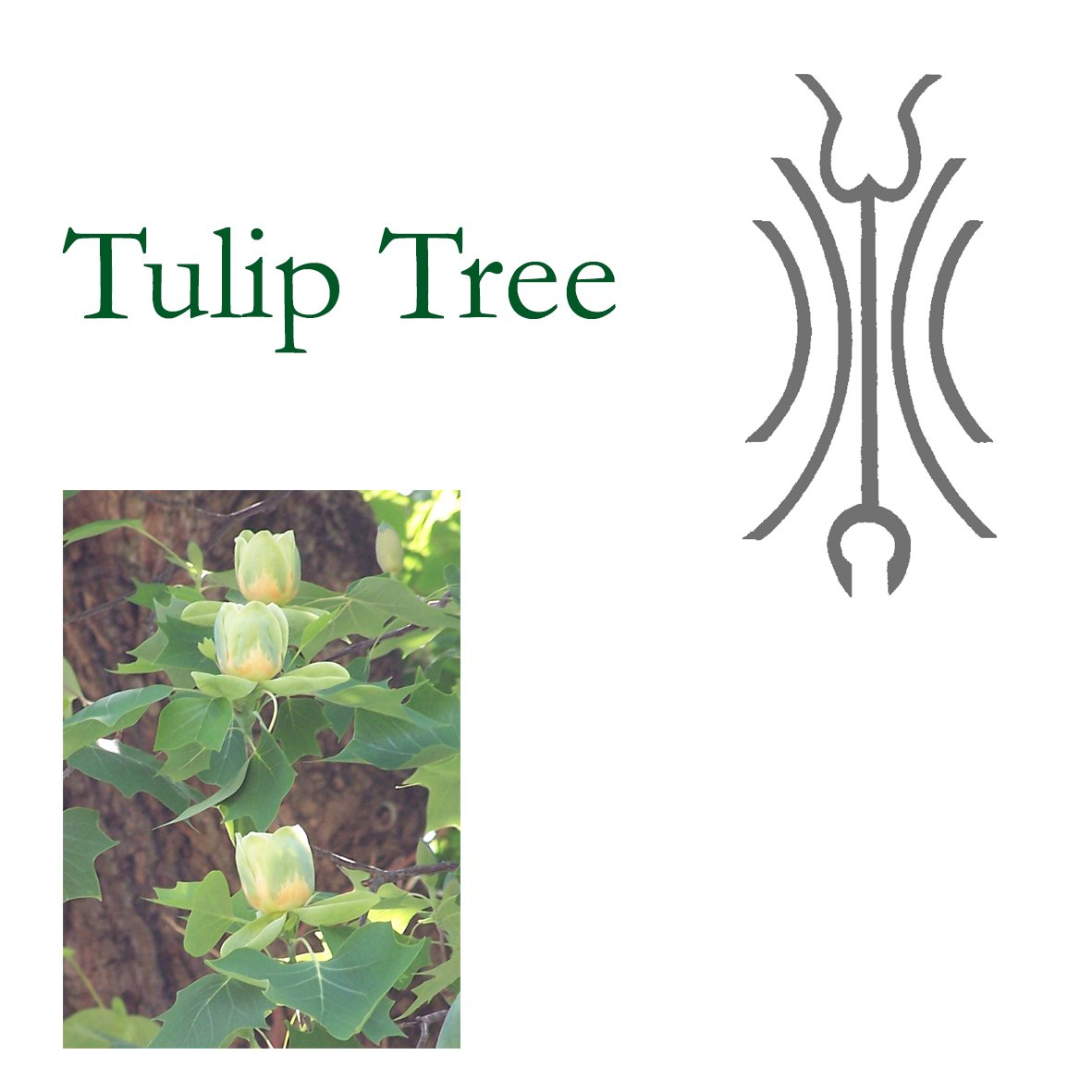TULIP TREE (Liridendron tulipifera)
Key: spiritual nourishment
The tulip tree, tulip poplar or yellow poplar is native to the eastern United States. It is fast-growing and can reach a height of 50ft in ten or eleven years. It will flower after twenty years and continues to flower for a further two hundred years. It is a tall tree that can grow up to 120ft (37m). It was first planted in Britain in the second half of the 17th century at Fulham.
The tree is named for its tulip-like flowers that open greenish-yellow with a blush of orange and pink in mild climates. The leaves are a unique four-lobed shape on long stalks that allow them to flutter like poplar leaves in any breeze.
Tulip tree essence encourages practical outlets for thought processes and wisdom from the Higher Self. There is increased motivation for self-expression.
At a physical level the essence brings cleansing and calming to the abdominal organs, and the pancreas in particular. There is a relaxation of tensions in this area.
It balances the Stomach meridian, which brings nourishment at spiritual levels. Where there is spiritual hunger, a gnawing emptiness, tulip tree will bring the means to fulfil personal creativity whilst also bringing increased feelings of connectedness and belonging.
The Small Intestine meridian is also affected. There is relief from sorrow and an increase in peace and understanding. This can also strengthen the links to the spirit worlds.
It is possible to remove deep blocks to personal creativity and expression with this essence. Tulip tree will strongly affect the balance of the throat chakra. Artistic abilities will be more likely to manifest and there will generally be an increase in mental creativity and communication skills. The release of long-term stresses encourages greater depths of meditative experiences and an increased clarity and peace. Strong emotional responses, particularly spontaneous reactions, are able to be easier controlled and less volatile in nature.
Signature: This is a tall, narrow tree that flowers from the lowest branches to the top of the crown. Although not conspicuous in colouring the flowers are large and elegant in shape and suggest the flowering of skills at many different levels of awareness.
Comment: The bark of the tulip tree produces a quinine-like, bitter compound.

